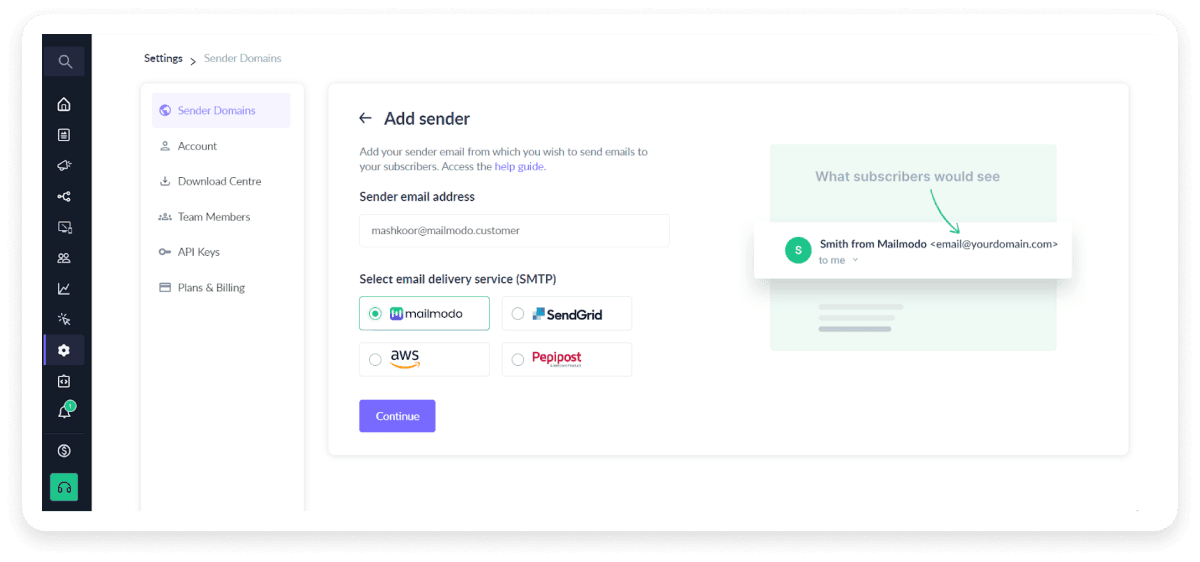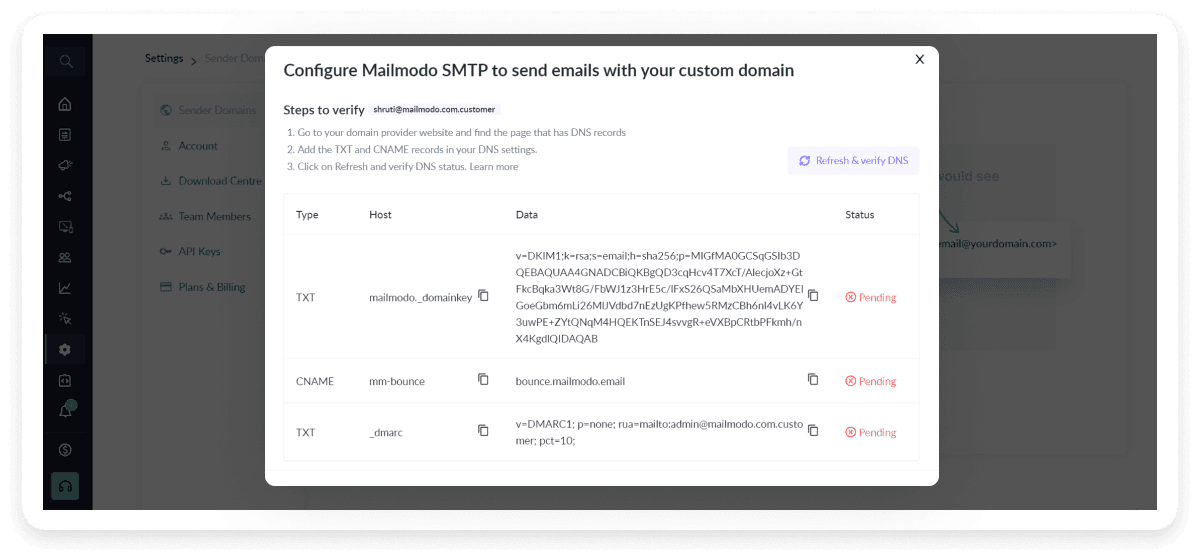Email marketing is the backbone of modern business outreach, but every marketer knows the frustration of emails that never make it to their destination. While some emails reach the inbox, others are intercepted by spam filters or outright rejected.
But what happens to those emails that bounce back? Where do they go, and how can you learn from those failures to improve your campaigns?
That’s where the return path comes in—a vital component that defines where bounced emails land and provides a treasure trove of data about delivery failures.
This guide dives deep into return path email, discussing how it works, and how you can create a custom return path email for yourself.
What is a return path email?
The return path email, also known as the "bounce address" or "envelope sender," is an email header used during SMTP communication to specify where bounced emails should be directed.
It serves as the designated recipient for non-delivery reports or email bounce notifications, which include details about why an email failed to deliver. Importantly, the return path email can differ from the "From" or "Reply-To" addresses used in the message, allowing marketers to separate bounce handling from regular correspondence.
Importance of return path in email marketing
In email marketing, every message counts. But when emails bounce or fail to deliver, they don’t just disappear—they leave valuable clues behind. That’s where the return path becomes a game-changer.
Here’s why a reliable return path system is essential for any email marketer.
With a designated return path, the bounced messages are routed to a different inbox and managed separately, ensuring they don't clutter your main inbox.
A return path also helps us track email deliveries and bounces, which in turn helps us fix the issues responsible for the bounces.
A return path header is also used in the DMARC authentication of your emails. To pass the DMARC authentication, emails must pass the alignment tests posed by SPF and DKIM, which are done between the envelopes. Failing these authentication checks exposes emails to phishing attacks.
A well-configured return path contributes to your email deliverability. It helps verify your identity as a legitimate sender and enhances the credibility of your communications, thereby bolstering your sender reputation and increasing email deliverability.
How does the return path work?
When you send an email, your email client or mail server includes a sender address in the email header. Your email is sent to your outgoing mail server (SMTP server). The SMTP server then routes the email through the internet, directing it toward the recipient's email server based on the recipient's domain (e.g. @example.com). The recipient's email server attempts to deliver the email to the recipient's inbox. If the email is successfully delivered, that's the end of the process from the sender's perspective.
However, if the recipient's email server cannot deliver the email for reasons such as a non-existent email address, full mailbox, or other delivery issues, it generates a bounce message that contains information regarding the bouncing of the email, which includes the reason for the delivery failure. The recipient's email server sends the bounce message back to the return path email address specified in the original email's header (the "Return-Path" or "Envelope From" address). This address may be a custom return path that is different from the "From" address you see in your email client, or it can be the same.
As per RFC 5321, the return path header is not inserted at the beginning of the SMTP session. The recipient’s mailbox inserts the return path after accepting it. There should exist only one return path, and as and when they result in a bounce, the mail servers will send email notifications to the return path’s address. Undeliverable messages may be notified in separate emails or as one email. It’s mandatory to use the return path as the destination for the delivery failure notifications. Therefore, there’s no such thing as an email with no return path.
How to view the return path of an email
Let’s look at how you can view the return path in Gmail and other most commonly used email clients.
Viewing the return path in Gmail
Step 1: Open the email you want to view the return path for, click on the burger menu in the top right corner, and select ‘Show Original’.

Step 2: A new tab will open. Use the search function to locate the word ‘Return-Path’ or scroll down to find it manually.

You can also check the return path of an email in other email clients in the same way. We’ve talked about how you can do it on Outlook, Yahoo, and Apple Mail.
Outlook: Right-click on the email you want to examine and select ‘View Source’. Then search for the word ‘Return Path’ manually or use the search tab to do so.
Yahoo: Open the desired email. In the top navigation panel, click on the burger menu and choose "View raw message". In the raw message tab, locate the return path at the beginning or search for it using the search tab.
Apple Mail: Open the email and click View and then click on Message. Then click on "All headers". In the right reading pane, scroll down to find the return path header.
How to create a custom return path
Some email service providers like Mailmodo let you create your custom return path. This includes setting up a custom return path domain within the platform and verifying it with the DNS record.
The steps vary with every email service provider's policy and configurations regarding domain setup. Look into the ESP’s documentation to check for step-by-step instructions. Let’s take a look at how you can create a custom return path in Mailmodo.
Step 1: Log in to your account.
Step 2: Click on Settings. Select Sender Domains. Add the sender domain from which users will receive emails and click on continue.

Step 3: Follow the given instructions to verify your sender domain and create a custom return path.
Go to your domain provider website and find the page that has DNS records.
Add the TXT and CNAME records in your DNS settings.
Click on Refresh and verify the DNS status.

Having a custom return path address will help your emails pass the SPF alignment in DMARC validation. When you implement SPF, DKIM, and DMARC, it will improve email deliverability and prevent your emails from spoofing attacks.
Variable envelope return path(VERP)
When you receive bounce notifications via the return path, they often lack the recipient's actual email address. Instead, they might say something like, "Your message wasn't delivered to X because their email address doesn't exist." This lack of specific email addresses makes it challenging to clean up your contact lists and prevent future bounces, which can harm your sender's reputation over time. To address this issue, VERP (Variable Envelope Return Path) was introduced.
A Variable Envelope Return Path (VERP) is a custom return path for each recipient on the email list. It modifies the return path address by including the recipient's email. This modification ensures that you receive the exact email address that caused the bounce, enabling better management of email bounce rates automatically.
Conclusion
The return path email is akin to perfecting a dance move - implementing it helps analyze and ensure the reason behind the bounce and helps tailor your efforts to have your message land exactly in the inbox. It also helps you to declutter your inbox and pass through the DMARC authentication protocols.
In addition to providing a place for bounced emails, return path email also holds raw data that made them occur in the first place, which is a crucial component of email delivery and deliverability. Having a clear, systematic return path is essential to creating a successful email program and improving the sender reputation.










